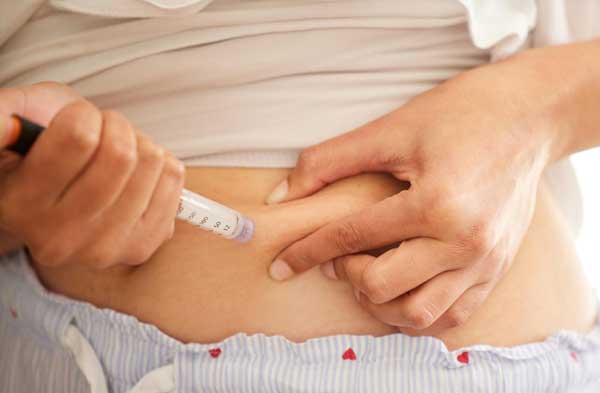Insulin resistance is a growing concern among Americans, with one in three individuals having the condition. Insulin resistance occurs when the body becomes resistant to the message insulin is sending, causing inappropriate growth, which can lead to several health complications. In this article, we will discuss how to spot insulin resistance and its signs and symptoms.

Signs of Insulin Resistance:
How to Spot It Insulin resistance can be detected through several signs and symptoms. One of the easiest ways to spot insulin resistance is to look at a person’s body shape. A woman with excess weight around her belly button, for example, may indicate that her body mass index is above 25 and that she has insulin resistance.
Another sign of insulin resistance can be found in the skin. Individuals with darkened skin on the back of their knees or the creases of their elbows have a high chance of having insulin resistance. Furthermore, if there is darkness to the skin on the back of the neck, this is an indication of excess skin cells caused by insulin resistance. In some cases, insulin resistance can cause skin tags or even yeast infections in various parts of the body.
Swollen Ankles and Hairy Toes
Healthy ankles can reveal much about a person’s overall health. Ankle swelling or fluid buildup can be an indication of poor health. Moreover, if a person’s toes are hairy, this can be a sign that insulin is working in their favor, rather than against them. Hairy toes are an indication of good insulin sensitivity.
Thumb-Shin Print Test
Another test for insulin resistance is the thumb-shin print test. To do this test, locate the spot about three inches north of your ankle and press down on your shin with your thumb for 30 seconds. When you take your thumb off, healthy people don’t have an impression. However, people with early signs of insulin resistance have a thumb print on their shin.
Changes in Speech and the Dr. Boz Ratio
Insulin resistance can cause changes in speech around 30 to 40 minutes after eating carbohydrates. Patients with insulin resistance tend to have a slower cadence, and their speech becomes slurred. Moreover, if you want to determine if you have insulin resistance, you can do the Dr. Boz ratio test at home. This test involves pricking your finger and checking your morning fasting blood sugar and blood ketones. Take the big number (glucose) and divide it by the little number (ketones) to calculate the ratio. A Dr. Boz ratio of less than 40 indicates that you do not have insulin resistance.
Conclusion
Insulin resistance is a growing concern in America, and early diagnosis is key in preventing further health complications. This article has discussed several ways to spot insulin resistance, including looking at a person’s body shape, examining the skin for darkened areas, swollen ankles, and hairy toes. The thumb-shin print test and changes in speech can also indicate insulin resistance. Finally, the Dr. Boz ratio test can be done at home to determine if you have insulin resistance. If you suspect that you have insulin resistance, consult your doctor for further testing and treatment.
